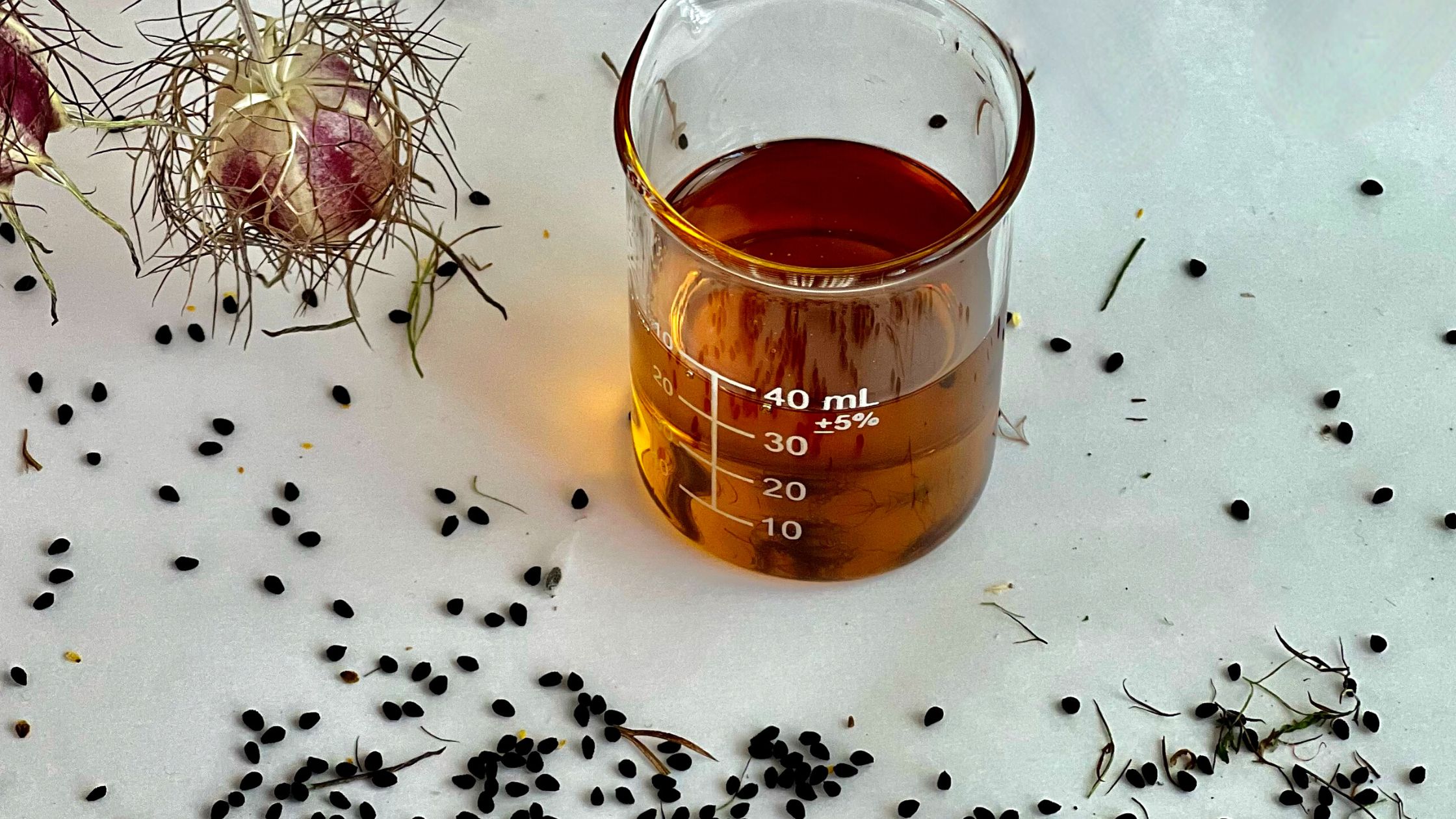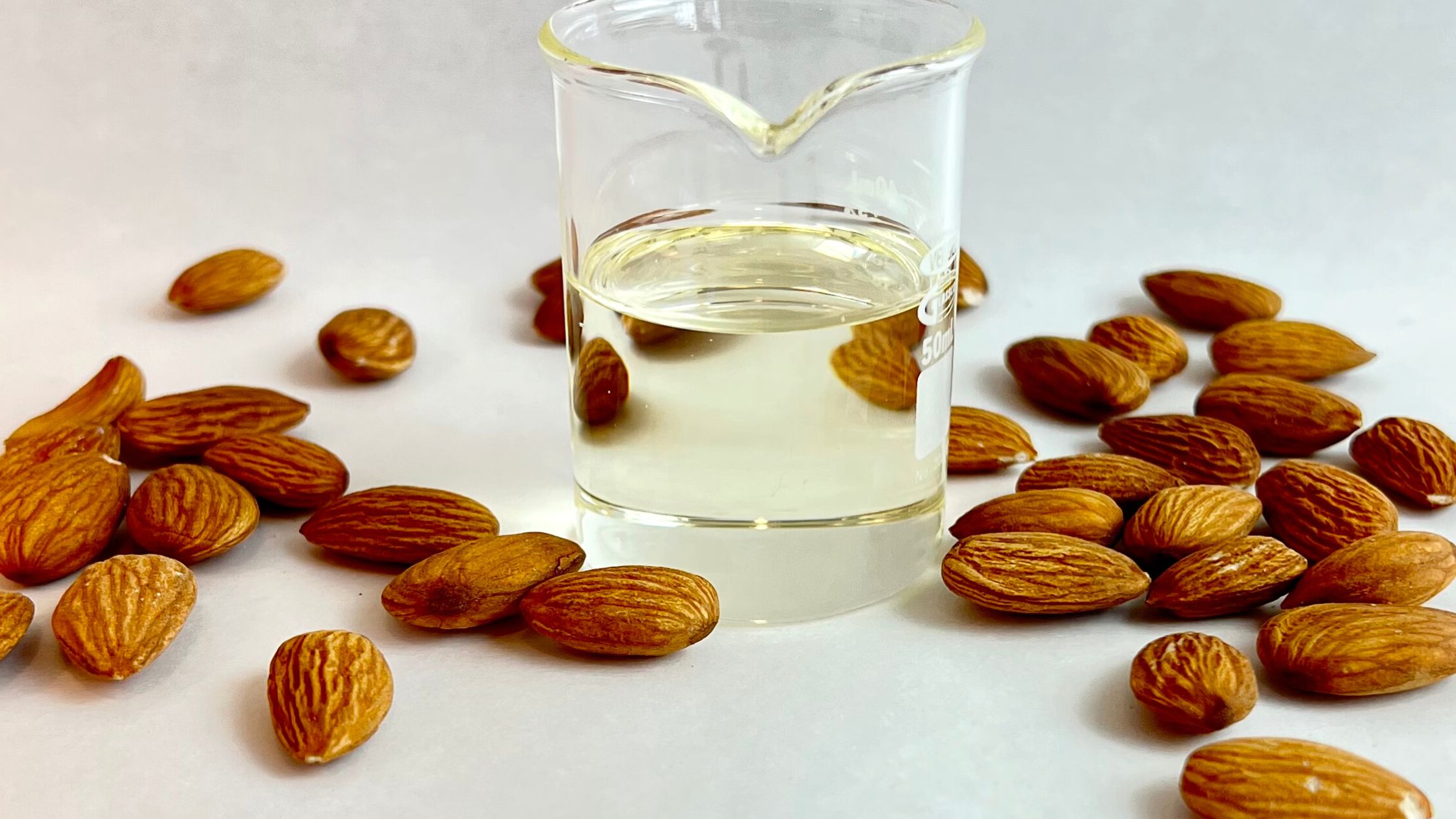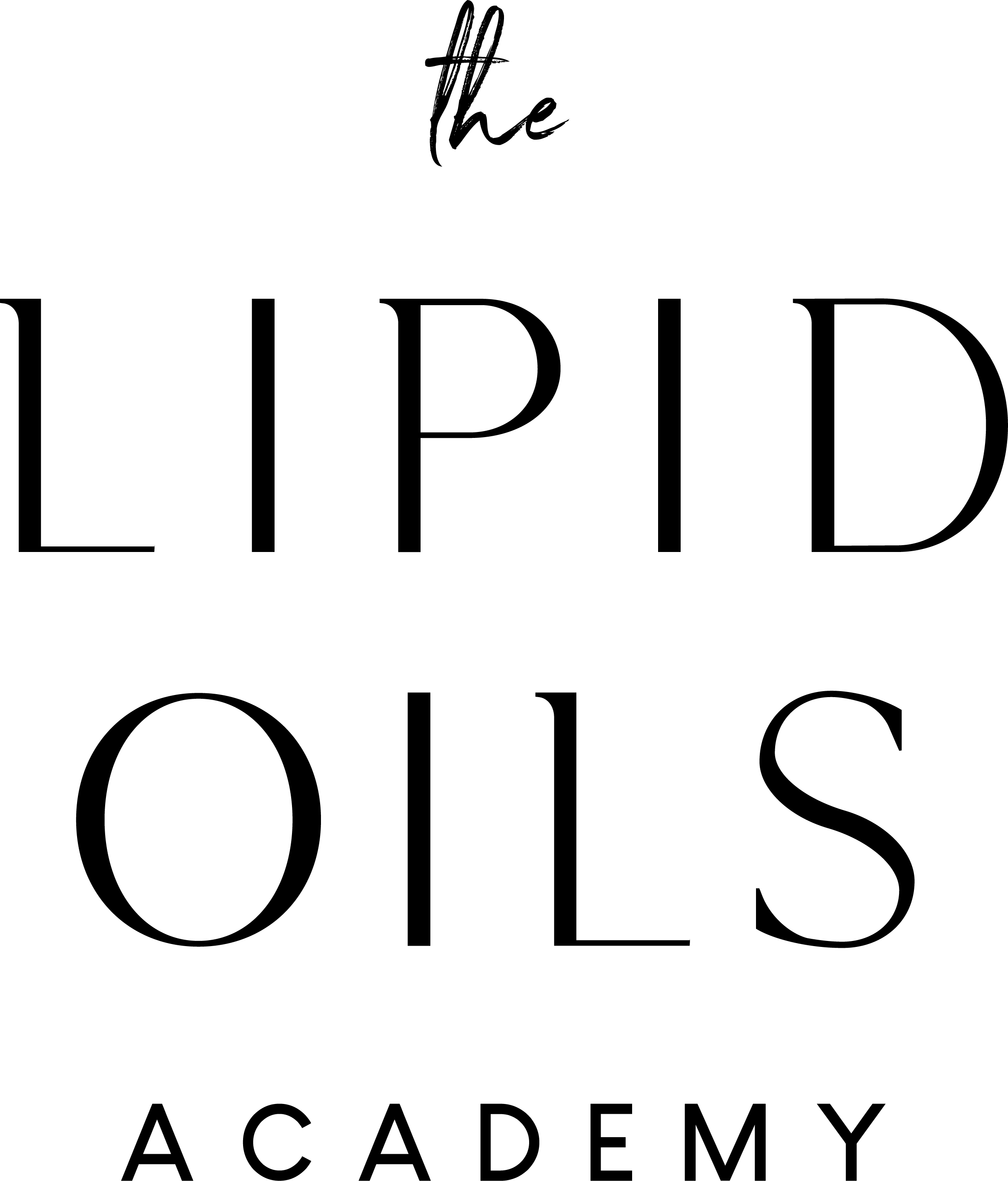In this article, I want to share three exceptional oils for irritated skin that aren’t essential oils. Technically these three oils belong to the class of oils called carrier oils. But they do so much more than simply carry your essential oils. These three oils and there are many more, have healing active compounds that help relieve itchy, irritated skin and minor rashes.
We’re going to look at:
Andiroba Oil
Black Seed Oil
Hemp Seed Oil
But first, I want to clarify the difference between carrier oils and essential oils.
Carrier oils vs essential oils
Carrier oils all belong to the class of lipid oils pressed from seeds, nuts kernels and in a few cases, the fatty flesh around the seed (like avocado oil and olive oil).
Lipid oils are made up of 85 percent or more fatty acids with the remaining portion composed of compounds like anti-oxidants, tannins, carotenoids and other trace nutrients. This is called the healing fraction and it varies from oil to oil.
Essential oils are distilled from flowers, roots, leaves and bark. The essential oils are actually volatile aromatic compounds. They appear like an oil, but technically they are not a true oil. Essential oils are powerful, healing compounds and valuable raw materials. To use essential oils safely you must dilute them in a carrier oil.
The lipid oils
The three oils we are going to look at here all belong to the class of lipid oils. These oils are generally mild, nutritious oils that you can use directly on your skin. But mild doesn’t mean inactive.
Some oils are more active than others based on a combination of their fatty acid makeup and the healing fraction, that percentage of the oil that contains nutrients and other active compounds.
While minor bumps, irritation, and rashes can seem to come and go without explanation, you can find gentle relief and start the healing process with these natural, gentle oils.
Note: make sure to consult your doctor for anything out of the ordinary.
Andiroba oil
Andiroba oil is a botanically related cousin of the very strong-smelling neem oil but without the highly unpleasant scent and overly strong actions. Andiroba has a reasonably neutral scent while having a lot of the repairing properties of neem oil. Neem oil has a long history as a skin-healing oil, but it’s also challenging to use because of its strong unpleasant scent.
When I discovered Andiroba oil was related to neem, I ordered a couple of ounces to research the fatty acid profile and active compounds.
Some plants and families are just like that, big helpers when we need them. This plant family, Meliaceae, also known as the Mahogany family is made famous by the beautiful hardwood it also produces.
Neem and andiroba along with mafura butter belong to the same plant family and all have skin healing, antibacterial properties. Reach for andiroba next time you’re making a combination of oils for irritated skin.
Black seed oil

Black seed oil (Nigella sativa) is a peppery-smelling oil with a long history in the Middle East as a skin-healing oil. It comes from the buttercup family Ranunculus, and as far as I know, is the only lipid oil that the family produces.
Note: Plants can have common names that duplicate across botanical groups, so clarifying Black seed oil by identifying Nigella avoids confusion. Additional common names are black cumin seed, onion seed, black caraway seed, and coriander seed, none of which have a relationship to cumin, onion, coriander, or caraway. Look for Nigella (Nigella sativa) seed oil, and you will get the correct oil.
The healing properties of this oil are legendary and stretch back to biblical times. Many studies have identified over one hundred nutrients, including vitamins, minerals, essential fatty acids, copper, phosphorous carotenes, protein, carbohydrates, and fiber!
Hemp seed oil
Hemp seed oil from Cannabis indica is the same plant that produces marijuana and CBD extracts. Hemp seed oil is the oil pressed from hemp seeds. Not to be confused with CBD oil, made as an extract of the flowers.
Hemp seed oil has an exceptional range of fatty acids that give this oil its healing properties, including GLA, gamma-linolenic acid, and SDA, stearidonic acid, both having anti-inflammatory properties.
Along with GLA and SDA, the oil has a generous linoleic acid and alpha-linolenic acid, the two essential fatty acids. The range of polyunsaturated fatty acids in hemp seed oil is known for their anti-inflammatory properties and ability to soothe, calm and repair skin eruptions, including chronic and difficult ones.
How to apply
You can use all three of these oils directly on the skin, or you could create a combination with another carrier oil. There is no wrong way to do it, so experiment, try different combinations, and see what works for you.
To use the oils straight on your skin, apply a few drops to the affected area and massage in.
Here are a few ideas for combining these oils with other oils to create a soothing skin blend…
Combining oils for irritated skin
So let’s look at possible combinations with other carrier oils to help the skin.

For very dry skin
For very dry and flakey skin, try combining one of these oils with a combination of oils high in oleic acid.
Examples of oils high in oleic acid are avocado oil, camellia oil, almond oil, and olive oil.
Choose an oil high in oleic acid. This oil can make up 50% or so of the total.
Then add one of the three oils we looked at above at 20 to 25% of the total.
Then make up the difference with another oil of your choice. Jojoba oil is a nice all-around skin-nourishing oil. The 20% to 25% of the active oil, like
Andiroba oil, Black Seed Oil, or Hemp Seed Oil will give your combination the skin-soothing effect you want.
For inflammation
For inflammation, you can further customize your skin soothing oil combination.
Adding oils like evening primrose oil, borage seed oil or black currant oil will help calm inflammation and redness.
These three oils are high the fatty acid GLA, gamma-linolenic acid and good oils to reach for when treating inflammation.
For undernourished skin
If the skin isn’t well nourished, pale and dry looking, adding a little pumpkin seed oil to your combination will help nourish and restore the skin.
Pumpkin seed oil is very dark and thick so you’ll want to make it only about 10 to 15% of the total you are mixing.
Have you worked with one of these oils before? Leave a comment below. I’d love to hear your thoughts, experiences and discoveries.

Thank you so much for your information on the 3 lipid oils. I have one Deep cleaning oil product which is using 3 oils (Almond, Olive and MCT with the higher % of Almond oil), and I feel it is not suitable for oily skin and the feeling while cleansing is not so good. Could you please help me to have a better combination. Many thanks
Thank you for so much information. I’ve never used andiroba oil – does it also hep with joint or muscle pain? I plan to try it because the smell of neem is very unpleasant – particularly for daytime use.
Hemp seed oil is one of my go to oils, especially now when it’s getting colder. My husband has frost bite damage to his hands from his time in the military, and hemp seed oil has helped tremendously.
Love your knowledge. I adore Black Seed oil for it’s massive health benefits inside and out. Especially for inflammation of any kind. However, my dry, sun damaged skin reacts negatively to oils high in oleic acid. I find Oat or Passion Flower to be more beneficial for my case. I haven’t worked with Andiroba oil yet, but from this and your previous posts about it, am inclined too.
Thanks most wonderful Susan.
Thank you for this amazing post Susan! I’m currently working on a facial oil/serum for sensitive skin. What are your thoughts on Abyssinian oil?
Black seed oil is one of my favorites! Although I like to blend it with something fairly neutral because I often find the scent too strong if applied neat. It is an amazing healer and I often use it when people are having chapped winter skin issues. It almost reminds me of an essential oil sometimes.